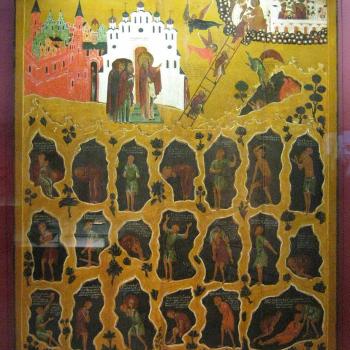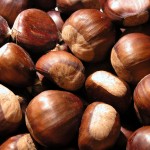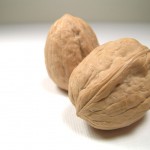A new offering on my blog is the Garden Catechism. In these posts we will look at the symbolism of plants in Christian art.
I’ll begin with one of my favorite fruits, the pomegranate.
When I was a kid I thought the pomegranate was popular in October because of its Halloweenish looks. Crack it open and its membrane looked like brains and the sarcotesta—a scary sounding word—the juicy part around the seed, was a bloody red!
The Pomegranate, Punica granatum, is native to Iran, found throughout the world, and fortunate for us, thrives in California and Arizona. It is called India’s (Indian) Apple, and from the French, grenade (yep, like the little hand bombs), comes the word for the beverage syrup, grenadine. In Latin we combine pomum, apple, and granatum, seeded.
In Judaism the seeds are said to symbolize sanctity, fertility, and abundance. One of the seven sacred varieties of plants mentioned in the Bible, the pomegranate is said to have 613 seeds which corresponds with the 613 mitzvot or commandments of the Torah. Depictions of the fruit have also been featured in Judaic architecture and design. They decorated the pillars of King Solomon’s temple and the robes of Jewish kings and priests. It is traditional to consume pomegranates on Rosh Hashanah because, with its numerous seeds, it symbolizes fruitfulness.
In the hands of the Christ child it is a symbol of the resurrection.
Placed in a still life alongside apples—the forbidden fruit of paradise—it symbolizes the Eucharist.
When the fruit is seen held by the hands of the child Jesus and the Blessed Virgin Mary it carries a twofold meaning of chastity and resurrection.
There are pomegranates on each side of the Chi Rho and depiction of Christ as an older child in the Hinton St. Mary Mosaic of Christ from the British Museum. Roman emperors thought it disgraceful to have the depiction of Jesus beneath ones feet, being disrespectful to walk or spill food on him, so banned and removed mosaic floors.
It can also indicate the church, the union of many under one authority.















